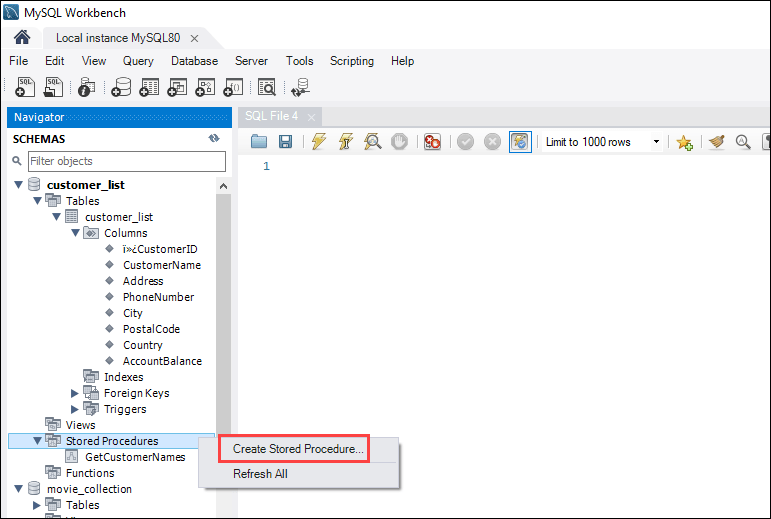

So, if the user has an SQL query that you write over and over again, keep it. Expand the stored procedure node in right pane. That will call stored procedure in MySQL Workbench.Bonus Read : MySQL Stored Procedure With Parameters. Execute the store procedure statements by clicking the ‘lightning’ icon shown below. Therefore, that warning is just a reminder for everyone to streamline their input of data. The stored procedure is a prepared SQL query that you can save so that the query can be reused over and over again. Enter the SQL statements for stored procedure in your new tab. In your particular case, you can breathe a sigh of relief because you, the Developer/DBA, already predefined the role CUSTOMER in the Role table. This situation is even more evident when doing Master/Slave Replication because the Slave could theoretically be inconsistent for this reason. In this mode, the call statement has to pass the argument to the stored procedure. Let us look at each of them in detail IN This is the default mode. Im surprised that this functionality appears. Ive got MySQL Workbench version 8.0.24, it does list the stored procedures and functions but I cannot edit these in the application. I am now on an iMAC (圆4) and it doesnt look like installing HeidiSQL is an option. For example, in MySQL Workbench, you can create a. MySQL supports 3 types of stored procedure parameters IN, OUT, and INOUT. Ive created a lot of stored procedures when I was using HeidiSQL on Windows. This situation, governed by the order the entries were made, would yield inconsistent results should you ever try to recover from the binary logs. If you don’t use MySQL CLI and want to view all stored procedures, you can use MySQL workbench. The classicmodels database is loaded successfully into MySQL database server. If the Customer Role was INSERTed into the Role table last, you get a NULL for the id.If the Customer Role was INSERTed into the Role table first, you get a numeric value for the id.In a high write DB environment, if the id was inserted into the Role table in one DB connection and you executed the INSERT in another DB Connection, you could get a race condition. The first part of the INSERT to be evaluated would be the (SELECT id FROM Role In essence, it is having an object that exists before its time. What's an anachronism ? Think of these analogies: The warning is meant to have DBA and Developer pick off anachronisms.


 0 kommentar(er)
0 kommentar(er)
